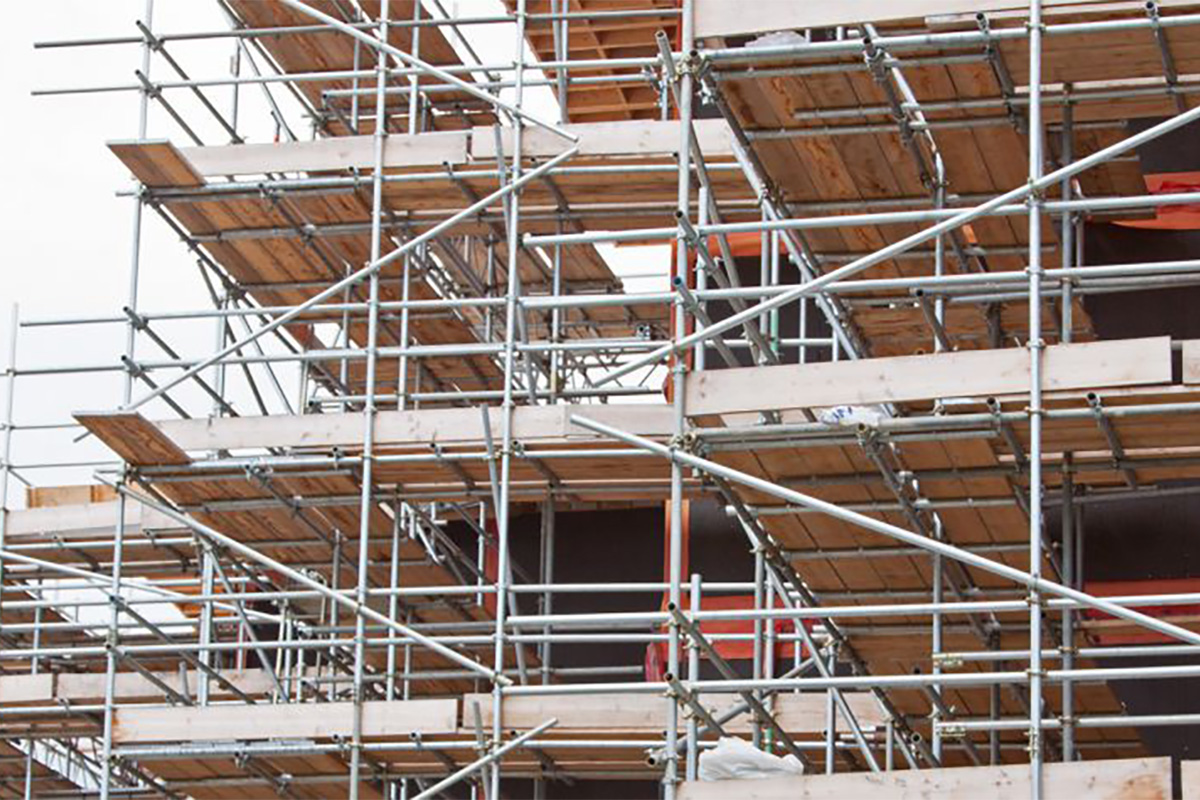Quality Scaffolding Surrey for Both Residential and Commercial Projects
Quality Scaffolding Surrey for Both Residential and Commercial Projects
Blog Article
Exploring the Various Sorts Of Scaffolding Utilized in Construction Jobs
The building market relies greatly on various types of scaffolding to satisfy details task needs, each offering distinctive advantages and applications. Typical framework scaffolding offers a tough structure for basic jobs, while suspended scaffolding is vital for job on skyscraper frameworks.

Typical Framework Scaffolding
Typical structure scaffolding is just one of one of the most extensively used methods in the construction market because of its toughness and flexibility. This system includes upright and straight frames that are put together to create a steady system for employees and materials. The primary components consist of upright blog posts, straight ledgers, and angled dental braces, which with each other offer a solid framework that can sustain substantial lots.
One of the key benefits of typical frame scaffolding is its versatility to various building and construction tasks, varying from residential structures to big business structures. The modular design enables easy setting up and disassembly, making it efficient for both long-term and temporary tasks. Additionally, the system can be personalized in elevation and size, suiting different building layouts and website problems.
Security is extremely important in scaffolding applications, and conventional framework systems are furnished with guardrails and toe boards to stop drops and make sure employee security. In addition, regular evaluations and adherence to safety regulations are essential in maintaining the honesty of the scaffold. In general, traditional frame scaffolding remains an essential choice in the building market, giving a dependable platform for labor and boosting total job effectiveness

Suspended Scaffolding
Suspended scaffolding uses an one-of-a-kind option for building and construction jobs that call for access to elevated surfaces, particularly in situations where standard structure scaffolding might be not practical. This sort of scaffolding is commonly put on hold from the roof covering or top levels of a framework, making use of a system of ropes, wheels, and systems to develop a working space that can be gotten used to different heights.
Among the primary advantages of put on hold scaffolding is its flexibility. It can be easily repositioned or decreased to accommodate modifications in building needs, making it excellent for jobs such as window installment, frontage job, and maintenance on skyscrapers. Additionally, the marginal impact of put on hold scaffolding enables better use of ground room in metropolitan settings, where space is frequently restricted.
Safety and security is an essential factor to consider in the usage of suspended scaffolding. Overall, suspended scaffolding gives a efficient and efficient option for accessing hard-to-reach locations in different construction situations, boosting both productivity and security on site.
System Scaffolding
System scaffolding, often regarded as a modern-day service in the scaffolding market, consists of pre-engineered elements that can be promptly assembled and adapted for various construction tasks. Scaffolding. This kind of scaffolding is defined by its modular layout, which permits flexibility and performance on job websites, accommodating architectural demands and different heights
Commonly made from high-strength steel or aluminum, system scaffolding offers improved resilience and security. The parts include upright blog posts, straight journals, Visit Website and angled braces, which adjoin securely, making certain a durable framework. The style usually incorporates standard fittings, simplifying assembly and disassembly processes, consequently minimizing labor time and costs.

Rolling Scaffolding
Moving scaffolding is a versatile choice to conventional set scaffolding, developed for wheelchair and convenience of usage on building sites. This kind of scaffolding contains a platform supported by frameworks with wheels, enabling workers to quickly transfer it as required. The mobility feature dramatically enhances productivity, as it lessens downtime connected with assembling and dismantling fixed scaffolding.
Normally built read here from light-weight materials such as aluminum or steel, rolling scaffolding supplies a strong yet mobile solution for jobs requiring regular repositioning - Scaffolding. It is specifically beneficial in tasks such as painting, drywall installation, and electrical job, where access to numerous elevations and areas is needed
Safety is paramount in rolling scaffolding layout, with features such as locking wheels to stop unexpected motion when in usage, and guardrails to safeguard workers from drops. Furthermore, many versions are flexible in elevation, accommodating various job demands.
Cantilever Scaffolding

The style of cantilever scaffolding commonly includes utilizing brackets or arms anchored to a structure or framework, making it possible for the platform to prolong external securely. Safety is critical; therefore, these scaffolds have to be engineered to endure ecological problems and various tons. Normal assessment and upkeep are vital to make sure architectural honesty and worker security.
Cantilever scaffolding is preferred for its convenience and effective use room, making it a popular selection in her latest blog metropolitan settings where area restraints are usual. It assists in simpler access to high elevations, eventually adding to the total effectiveness of building and construction projects. Just like all scaffolding types, appropriate training and adherence to safety standards are important for workers making use of cantilever scaffolding.
Conclusion
Standard frame scaffolding offers security, while suspended scaffolding supplies versatility for elevated jobs. System scaffolding promotes fast setting up, and rolling scaffolding improves movement for varying work atmospheres.
Standard structure scaffolding offers a sturdy structure for basic jobs, while suspended scaffolding is essential for work on skyscraper frameworks.Moving scaffolding is a functional alternative to conventional fixed scaffolding, made for mobility and ease of use on building websites. As with all scaffolding types, correct training and adherence to security requirements are essential for workers utilizing cantilever scaffolding.
Conventional frame scaffolding provides stability, while put on hold scaffolding supplies flexibility for elevated tasks. System scaffolding helps with fast setting up, and rolling scaffolding boosts mobility for differing job settings.
Report this page